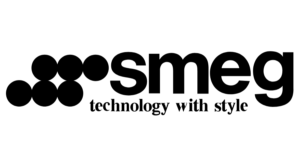In today’s rapidly evolving global economy, the concept of innovative assets has become increasingly important. Innovative assets encompass a wide range of intangible assets such as intellectual property, brands, technology, and knowledge capital. These assets are critical for companies to gain a competitive edge in the marketplace, drive growth, and create value for stakeholders. Understanding the definition and scope of innovative assets is essential for businesses to Voltprofit Max leverage these assets effectively and maximize their impact.
Defining Innovative Assets
Innovative assets are intangible assets that drive innovation, creativity, and value creation within an organization. These assets are characterized by their ability to generate competitive advantages, differentiate products and services, and enhance market positioning. Unlike tangible assets such as machinery or real estate, innovative assets cannot be easily quantified or valued on a balance sheet.
There are several key categories of innovative assets, including:
– Intellectual Property: This includes patents, trademarks, copyrights, and trade secrets that protect inventions, designs, brands, and creative works. – Technology: This encompasses software, hardware, data, algorithms, and digital platforms that enable organizations to innovate and compete in the digital economy. – Brands: Brands are valuable assets that represent a company’s reputation, credibility, and customer loyalty. Strong brands can command premium pricing and drive customer engagement. – Knowledge Capital: This includes the collective knowledge, expertise, and skills of employees that enable an organization to innovate, solve problems, and adapt to changing market conditions.
The Scope of Innovative Assets
The scope of innovative assets is vast and continuously expanding as technology advances, markets evolve, and consumer preferences shift. Companies across industries are investing more resources in developing and leveraging innovative assets to stay ahead of the competition and drive sustainable growth. The scope of innovative assets can be broadly categorized into the following areas:
– Research and Development: Companies invest in R&D to create new products, services, and technologies that have the potential to disrupt markets and generate revenue streams. R&D assets include patents, prototypes, and research findings that can be monetized through licensing, partnerships, or commercialization. – Branding and Marketing: Branding and marketing assets are critical for building brand awareness, attracting customers, and establishing differentiation in the marketplace. Brands can be valuable assets that contribute to long-term competitive advantages and customer loyalty. – Digital Innovation: In the digital age, companies are increasingly focusing on developing digital assets such as websites, mobile apps, social media channels, and e-commerce platforms. Digital assets enable companies to engage customers, collect data, and create personalized experiences that drive customer loyalty and sales. – Human Capital: Knowledge capital and skills are essential assets that drive innovation, problem-solving, and organizational agility. Companies invest in training, talent development, and knowledge sharing to build a skilled workforce that can adapt to changing market dynamics and drive business growth.
Conclusion
Innovative assets are critical for companies to compete, grow, and thrive in today’s dynamic business environment. Understanding the definition and scope of innovative assets is essential for businesses to identify, leverage, and protect their intangible assets effectively. By investing in R&D, branding, digital innovation, and human capital, companies can create value, drive innovation, and build sustainable competitive advantages that differentiate them in the marketplace. As the global economy becomes increasingly digital and interconnected, innovative assets will continue to play a vital role in shaping the future of business and driving economic growth.





